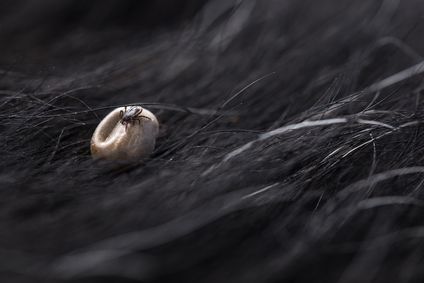You’re Likely To Encounter These Three Types Of Ticks In Maryland
Ticks are one of the stealthiest pests you’ll ever come across. Their tiny size makes them almost impossible to see- that’s when they’re starved. After sucking blood, they swell to very interesting sizes! But even so, these tiny pests can be quite a nuisance to you and your pets. You almost wish they only bit and moved on with their lives. But the problem is, a tick bite often results in the transmission of disease. Different ticks are associated with different diseases. This post will focus on just three of them.
Brown Dog Ticks

If “popularity” is anything to go by, then the brown dog tick deserves your principal attention. It is red-brown in color and about 1/8 of an inch long. This one can be found anywhere in the world. And so, don’t be surprised to find it on your dog.
Where Are Brown Dog Ticks Found?
Brown dog ticks tend to be found in wooded and grassy areas; however, they can also be found in urban areas and on beaches in coastal areas. Adult ticks commonly attach to the ears and between the toes on dogs, and the larvae and nymphs are often found in hair along the dog’s back. When the individuals of each feeding stage become fully engorged, the ticks drop from the host and seek some protected situation in the immediate surroundings. For this reason, all tick life stages may be found behind baseboards, around window and door moldings or in furniture…
What Diseases Do Brown Dog Ticks Carry?
Brown dog ticks can transmit the canine-related diseases canine ehrlichiosis and babesiosis and have been known to transmit Rocky Mountain spotted fever to humans. Brown dog ticks are not known to transmit Lyme disease. Read more at Arrow Exterminators
American Dog Ticks

You also need to be aware of this one if you have a pet at home. They don’t mind latching onto your cat or dog, so it’s best to keep an eye out for them. After a blood meal, these ticks grow to up to 10 times their size! Here’s a sneak peek into these ticks.
American dog ticks are found over most of North America, predominantly along forest edges and in areas with little or no tree cover, such as grassy fields and scrubland, as well as along walkways, sidewalks, and trails. American dog ticks are 3-host ticks (use 3 different hosts in their lifecycle) feeding on people and a variety of animals ranging in size from rodents to livestock. Adult stages prefer medium-sized hosts, including racoons, skunks, cats, dogs and other canids. Larvae and nymphs mainly infest small mammals including mice, voles, rats, and chipmunks. Nymphs and adults can transmit Rocky Mountain Spotted Fever and lesser pathogenic spotted fever group germs as well. They also transmit the germ causing Tularemia. American dog ticks can survive for up to 2 years at any given life stage if no host is found. Read more at URI
Lone Star Ticks

Their name betrays them, but these ticks have a star on their backs. They are go-getters. So you need to keep an eye out for them.
Range: Widely spread across the southeastern and eastern regions of the United States, including the eastern half of Texas, Oklahoma, Kansas and the southeastern parts of Nebraska. They can live as far north as Iowa, Illinois, Indiana, Ohio, Pennsylvania, New York and Massachusetts, and even in the southern parts of New Hampshire and Maine.
Can Cause: Ehrlichiosis, tularemia, Heartland virus disease, Bourbon virus disease, Southern tick-associated rash illness and Alpha-gal Syndrome.
Notes: These are aggressive ticks that bite humans. Adult females (which are recognized by a white dot or a “lone star” on the back) and nymphs are most likely to bite. Lone star tick saliva can be irritating and cause redness and discomfort, but that does not necessarily indicate an infection. Read more at NY Times
As much as you want to avoid these ticks, it doesn’t make sense to walk around your yard with a magnifying glass. So, as they try to intrude into your space, you need to do your part in tick-proofing your home.
What better way to do this than entrusting your tick control plan to the experts? Backyard Bug Patrol has the knowledge, skill, and experience necessary to keep your yard free of ticks. Better still, we use organic products to achieve this goal. You can’t go wrong with us on your team. Call us today for the best deal in town!
